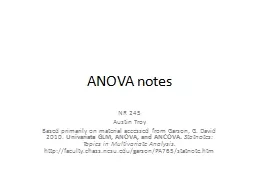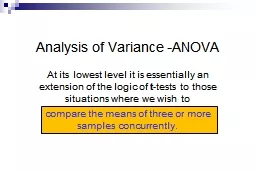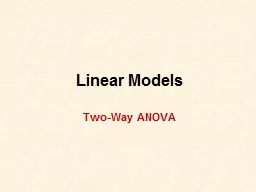PPT-Factorial ANOVA Chapter 14
Author : alida-meadow | Published Date : 2019-03-19
People can be divided into two classes Those who go ahead and do something and those who sit still and inquire Why wasnt it done the other way Oliver Wendell
Presentation Embed Code
Download Presentation
Download Presentation The PPT/PDF document "Factorial ANOVA Chapter 14" is the property of its rightful owner. Permission is granted to download and print the materials on this website for personal, non-commercial use only, and to display it on your personal computer provided you do not modify the materials and that you retain all copyright notices contained in the materials. By downloading content from our website, you accept the terms of this agreement.
Factorial ANOVA Chapter 14: Transcript
Download Rules Of Document
"Factorial ANOVA Chapter 14"The content belongs to its owner. You may download and print it for personal use, without modification, and keep all copyright notices. By downloading, you agree to these terms.
Related Documents














